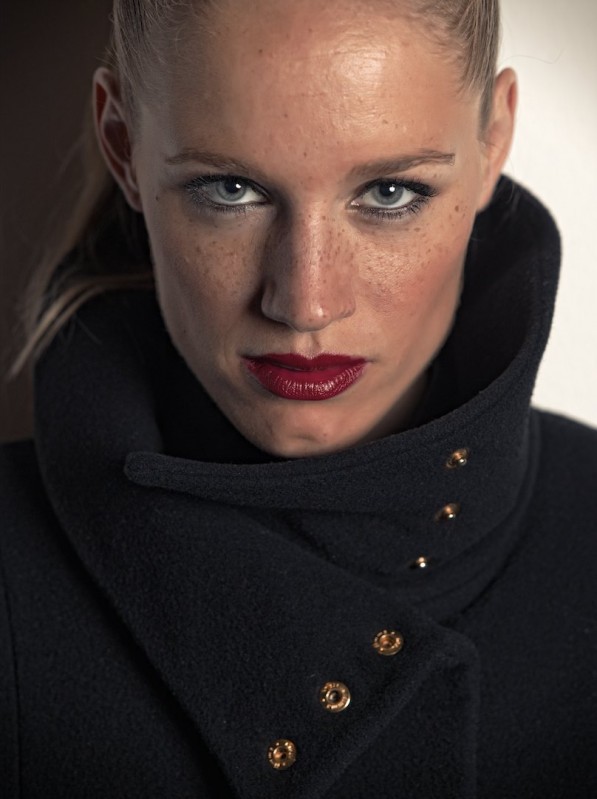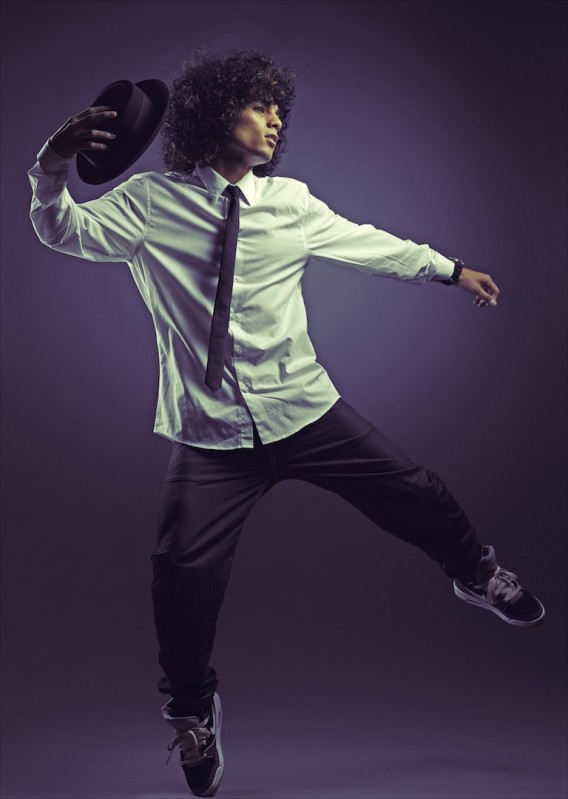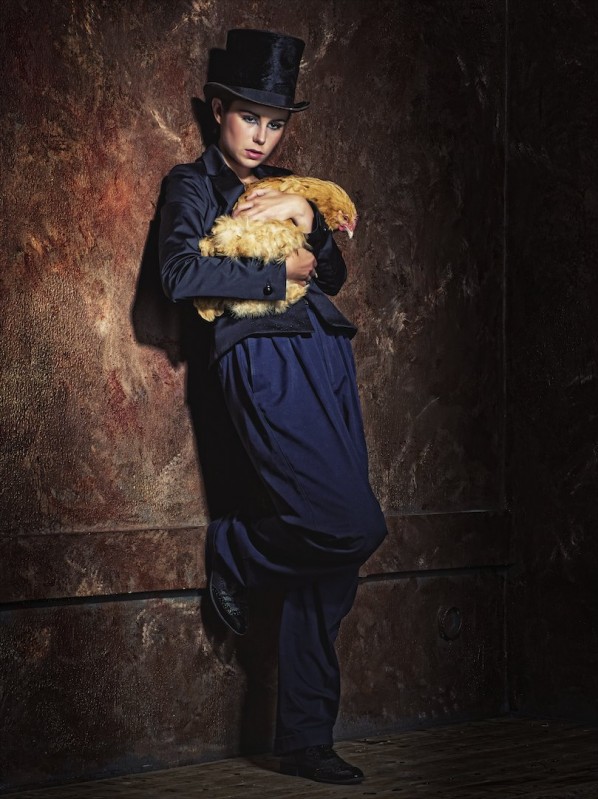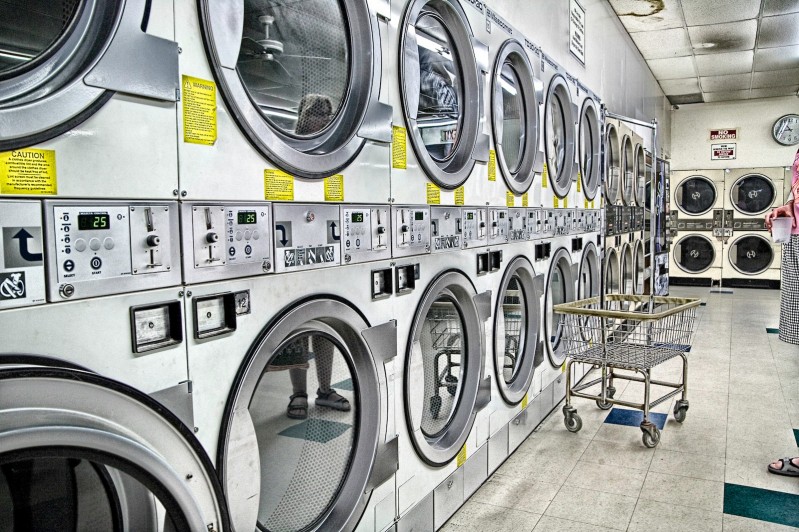Photoshop ? or Camera ? or both ?
This is a question that has been asked so many times that I thought it would probably be fun to have a small blog post about it.
There are many thoughts among photographers ranging from “hey man we’ll fix that in Photoshop” to “Photoshop ?, nah straight out of the camera”.
I have to be honest I’m a bit in between.
Why fake it when you can create it ?
Many of you know that this has become my motto over the years, and I still believe in this.
I see absolutely no reason to be sloppy on location or in the studio, because we can fix it in Photoshop, yes of course we can fix things in Photoshop and yes I will fix things in Photoshop but I will not fix things that could have been solved before taking the shot. First of all this method saves a lot of time but secondly, and for me more importantly, this method will give you more “real” images.
What do I fix in Photoshop ?
Wrinkled backgrounds are a thing that will happen a lot of times when using paper, canvas or any other type of background material that can wrinkle. You could of course make sure you use new paper every photo shoot but most “normal” photographers can’t pay for that. And this is a very easy and quick fix in Photoshop so that’s no problem at all.
The second thing I will fix in Photoshop is skin.
There is I think no model in the world that has 100% perfect skin.
Now we could go in the discussion of “should we work on skin, or post it online or print it the way it is”
For me it’s an issue that is not as clear as one might think.
For example when I shoot in the studio I will work on the skin to make it smoother (not perfect), I will always leave some “problems” in, and take some other “problems” out, but I will not replace the whole pore structure that some people will do, I will also not gaussian blur all detail out of the skin and make her look like Barbie fresh out of the box. I will try to find some in between version that suits me and the model (but most importantly the client), however I will not do something to my images because my client wants it, do remember this, I will go a long way (often almost against my limits of what’s acceptable) but I will never cross my own barrier. You as a photographer are judged on the work you do, if your client wants you to do something that is not fitting your style you have to decide for yourself what to do. For me the limit is without a doubt removing all facial structure, I will simply not do that, I’m willing to make it silky smooth with pores but I will not remove everything.

So what do we use for skin ?
Well it depends.
I’ve been playing a lot with different plugins but when I have to advise just one it would probably be Dynamic skin softener from NIK, you can find this in the Color eFeX suite (which I REALLY recommend because it has some great stuff, later more on this), other good options are out there but in the end I will advise NIK because it’s hard to beat when considering the complete package. When a client has more budget (and now a days they hardly do) we will use the dodge and burn method or some shorter manual options, I have to be honest that this is not my favorite waste of time but we can offer it. Also the plugins have become better and better and when you play (you really shouldn’t use the standard settings, that’s ugly) you can get very good results.

So when the skin is done what more ?
I love to color my images.
Sometimes I will give the image a more vintage look, sometimes I will go all overboard and do more cross processed looks, over time I’ve developed several actions with curves which work great, by the way this is one of the reasons why I really stress people to buy something like the colorchecker passport or spyder colorchkr, when you have a solid and repeatable base you can run those actions and filters and get the same results time after time, when you don’t do any form of “precalibration” of your file you will end up with a mess most of the times. By the way, when using these tools remember to always first load the profile (with the passport it’s under cameras and with the colorchkr it’s under calibrations) and then use the whitebalance tool on one of the gray patches.
When looking at the modern plugins like NIK colorefex they have some pretty decent film looks, but when you look at Alien Skin exposure 3….. man nothing can beat that, so when you are really into nailing a nice analogue look on your images make sure to check out Exposure 3 from Alien Skin, I have to be honest that I still use my own method but I’m more and more experimenting with Alien Skin and loving it. Sometimes just a little bit of the effect mixed in with the original can give your images that little bit of unique look, and sometimes just going overboard will do the trick.
 Finishing it off
Finishing it off
The other thing I love to use can also be found in NIK ColorEfex and it’s called Tonal contrast.
Now this option within ColorEfex should be a stand alone plugin and NIK would sell it like hotcakes, now a lot of people miss it because it’s buried in a mix of many great (and some lesser great) options and settings. Tonal contrast however ROCKS.
What it does (in short) is enhance detail to a point where you can change the whole image to look surreal.
I love to use it in a lesser setting to enhance some features in for example the background or in the clothing (it works great on white or black clothing for example), but you have to be very careful with this plugin (actually the same goes for all plugins) because when over doing it will cause loads of artifacts, so always do it on a separate layer and paint away what you don’t like.
 Conclusion
Conclusion
In todays market it’s incredibly important to find your own unique look “voice”.
Let your images stand out from the competition, realize there is no magic “make it look like xxxx” filter.
Remember that your images will be MUCH stronger when you think about the image before pressing the shutter.
Remember that your images will be MUCH stronger when you know how to measure, manipulate and use light.
Remember that your images will be MUCH stronger when you can use Photoshop the correct way.
For me the correct way is to shoot a 99%-100% image (or at least the best I can get it).
Actually an image should get into Photoshop and you should be wondering, should there anything be done to this ?
Than you know you have the perfect image to start with.
Start with cleaning up, make your unique look and in fact you’re done.
It’s no secret that my total workflow on images from start to finish in Photoshop is often less than 10 minutes, some images will take longer of course (especially with skin work) but overal the average time I spend in Photoshop is less than 10 minutes per image. I’ve seen (and I know you have) videos and seminars where heavy underexposed images are transformed into works of art……. well to be honest why would you wanna do that ? I was told on Photoshop World by a good friend of mine that he loves my expression “why fake it when you can create it” but that he saw some videos online on for example youtube were he thought that the motto should have been “why create it when you can fake it” For me it makes no sense. Let’s be honest we are PHOTOGRAPHERS, we are not Photoshoppers. Well ok, Photoshop has been a part of our workflow for many years now, and to be honest I can’t live without it, but let’s think about this… the image should be our main focus (no pun intended :D) and not the retouching.
I’ve talked to a lot of photographers over the years and the frightening thing is that there are more and more new (and even pro) photographers claiming that light meters, calibration devices etc. are all things of the past. With the modern cameras there is hardly any noise in the images any more so we can underexpose by up to 2-3 stops and still fix it…. they say with a big smile on their face like they invented the new McDonalds burger with 0 calories and super taste…… Oh my.
Maybe I’m a dying breed of photographers (I hope not but I am turning 40 on May 6th) but I strongly believe that we should nail THE shot in camera and not after the event. When you are done with the shoot there will be Photoshop work without a doubt, but again that should be to enhance the image not to create the image.
Please comment
Feel free to comment and spread the link.
The blog has been getting a lot more visits the last few weeks (and Photoshop world has helped for that) but we always need more. I try to post at least one technical piece online every week, and several semi technical blog pieces so spread the link to the blog and help me make it more interesting.
If you like what we do here, and want to support the blog please buy from our affiliate companies by following the links or the links below.





Great as ever! …your post are always R’n’R Frank! \m/ 😉
I love to rock so thank you 😀
Now digging out my guitar and iRig and give you some riffs for being the first to comment, yeah baby.
Great post!
I totally agree with you on “why fake it when you can create it”.
Saves so much time to get things right in-camera and it is way more satisfying.
I mean, heavy photoshopping has it’s place. Some people create beautifull art with it while using photo’s, but thats not the style you mean here… and most photographers use it for.
Indeed, don’t get me wrong.
I LOVE the digital artist, I’m jealous for their skills, but I think there is a time and place for everything.
Even for a digital artist I think the base should be as perfect as it can be, so a good exposed and color managed image.
The blogpost itself was more aimed at the pure photographers 😀
this was great Frank. As i am getting better at lighting and spend more time after your previous videos ive seen and blogs on getting as much as I want to be right on camera, I have noticed with some images lately ive felt. DO i need to do anything to this? And i have but its been pretty minor. it is quite a relief in my eyes to initially not have to spend time in images fixing issues before you start polishing it off.
that’s what I mean, aim for 100% and finish it off in Photoshop.
I will cut down A LOT on your time behind the screen.
“realize there is no magic “make it look like xxxx” filter”
I was so hoping for a ‘Doorhofalizer’ plugin…. 😉
Just kidding of course. You are totally right by saying “why fake it when you can create it”. As an amateur trying to find his ‘voice’ I try to keep this in mind as well as what Zack Arias says: “when you find yourself thinking that you can fix it in Photoshop, hit yourself on the head. You are just being lazy”.
Also, as a photographer it may be easy to visualize in your head what you can fix or add in Photoshop, but I doubt that the person you are photographing has the same ability. What do you tell them? “Yes, this picture is too dark but I can fix that in PS”? I think the person you are photographing (and/or your client) would much rather see a great image and then be amazed by the final version, than having to imagine the image to look like something else…
A story that has stuck with me is one from Joey L.. He photographed a band behind a broken car window in his studio . He said that he could have added the broken window effect in Photoshop, but what would he tell his client? “Now imagine them standing behind a broken window”? By bringing in the window he also send out a message saying “I got this covered… I can do this”. Building trust in the process.
I think a model would also have more confidence in the shoot if she sees the first couple of images and she likes what she sees rather than hearing “well, the final image will look nothing like this, so imagine it looks like this or that”.
Just my 2 cents as a struggling amateur trying to find his ‘voice’… 🙂
100% correct.
NICE post, and gorgeous images. I’m liking this blog a lot;)
Thanks a lot Frank. A great blog post to make your point on the issue.
I really liked the conclusion part, especially the 3rd, 4th and 5th lines, they summarise everything.
I am just a beginner in the world of photography. By default I am part of the digital age but I have huge respect for our predecessor photographers who created magic without faking it on post production.
I think still the essence of photography is same, creating magic in camera playing with light and subject. That’s why we hold the camera in the first place.
Having said that I am in favour of taking the full advantage of digital technology. Apart from image editing, it’s now possible to share our ideas with master photographers thanks to digital age.
In a nut shell, we should take the benefits of technology still preserving the true spirit of photography.
Thanks.
Imran
You nailed it 100%.
I LOVE Photoshop, and sometimes I also love to pixel push, but when you do that with a “perfect” file it’s so much better.
I totally agree, I used to think that all shots had to be ” fixed ” in photoshop until one day as my skills were improving I nailed a shot and can honestly say I couldn’t make it better in photoshop. Apart from sharpening and bit of noise reduction which my 7D requires. So now I always try and get the exposure spot on, which results in higher image quality anyway as underexposed images lack a great of infomation compared to correctly exposed images. Keep it up Frank love your work!
You know this is funny.
I get so many comments from people after teaching a seminar that say “Well you are right, but to be honest I don’t think it’s that important with modern cameras”.
When I speak them next time they have often changed their tune completely 😀
What people often don’t realize is that with digital you have a limited dynamic range, it’s from 0-254 and nothing more.
You can pixelpush indeed but you are in fact destroying your image (just look at the histogram for fun and you will see a nice smooth histogram change into a histogram with holes, this means you’re missing bits there so there can be different artifacts creeping up.
Also think about time, it’s a delight to shoot and open it in photoshop, run an action, store and ready 😀
Frank — Another fantastic post. So thrilled I discovered your blog! Thanks for sharing your insight & experience.
John
Thanks for the comment, share the link and let’s make the blog even more interesting 😀
Frank great post. Photoshop can’t fix bad photography (well not really bad I should say) but there is so much room for experimenting and bringing your vision to life that to discard post processing is like limiting your self to one lens…doable but not much fun.
I never said discard photoshop. I love it. Just don’t use it as the fix bad photography tool 😉 work on great photography the go wild in photoshop.
I am so there with you on the “Why fake it when you can create it” , I am not very good with PS, I can do some fixes but I am old school (film days) where you had to get it right in the camera, aka before photoshop (there were other programs hehe). Take 5 minutes to fix the models makeup or spend 1 hour or so in photoshop hmmm. I prefer the 5 mins on makeup.
I mainly use PS for background fixing as stated above, also converting a not true white BG to 100% white. Or what I prefer to do is use 18% gray BG and then no need to fix hehe.
The less time I spend in PS the happier I am. 🙂
I used to be complete “purist” – the photo version of WYSIWYG: What You Captured Is What You Get. Untill I had to correct the background (as Frank pointed) and had to remove some skin unperfectness. And two years ago – by accident – I found Scott Kelby’s book about digital editing. And his ideas and tips directed me in a way, that I know what am I doing with PS and what I want to achieve in post processing. So best possible photo is a primary target. But then PS can really help improve it to be even better.
Happy shooting!
I think there are good reasons to get as good a shot, and as precise an exposure, as you can during capture. But the photograph has never been finished once exposed. Not even with slide film. The processes that take over from there, wet development, printing (or now RAW conversion and through the post-processing workflow) have always played a part in the final render.
So, it’s all good if you ask me. Each photographer (or digital artist) should make up their own minds about when the image is completed — or how feasible it is to do more work after capture.
Me? I like less PS most of the time. But I use it without constraint if it suits me for a particular image.
nice article..
it remind me your video in Kelby training
i love it ..do it before better to be more realistic
Regards,
Correct, and it saves loads of time.
Thanks,Frank.Today is my first visit here/I know you from Kelbytraining.com/.This your blog is great!!!
thanks, spread the word 😀
This is genius! Local contrast enhancement:
http://www.luminous-landscape.com/tutorials/contrast-enhancement.shtml
I have tried and was really surprised by the result.
Take care Irek
This technique I often used for my conversion to Internet.
Now I use resize magic which does this better to be honest.
It’s however still a great technique when you have an image with some softer contrast and you want to spice it up just a bit, great technique that served me many times.
Frank that you so much for all your great suggestions in this blog! You mentioned the Colourchecker and the Spyderchecker, what is the difference between them? Do you use one more than the other? Thanks
Hi,
I’m using the passport more.
The passport makes a camera profile while the spyder version creates a profile for the image.
In fact (and this sounds expensive) you should be complete when using both.
First make a camera profile with the passport per modifier you use, and then use the spyder colorchkr for the series you shoot.
The chkr is slightly more accurate because it has more squares, but the workflow is a bit more elaborate than the passport.
If I had to choose just ONE, I would take the passport.
When I read this blog entry first time I did not relize that you were talking about a spyder card I thought it was just the monitor calibrate tool by spyder. nnLast weekend I did a group studio shoot, one pg had the cube with the silver ball and 3 shades gray black white. That looked cool. And now I see they use it with the spyder color patch card.nnI only have the passport and love it. The best par of using it is it makes work in lightroom so much faster. And when I use it I am always happy when it only makes a minor tweak to the color, what that means to me is that I got the color balance correct before I clicked the shot, by having a calibrated light meter and custom WB set in camera. For me it has not been 100% but I like how close it is before I adjust with passport. So I am very close to the SOOC. Which really helped on my first shoot on slide film in studio. As I do not have polaroid back I used digital as well to do tests prior the shoot, and with some help from Frank and another PG and my trusty L358 I nailed the color balance on the slides. The only issue I faced was converting them to digital, scanner related issues.
I just re-read the conclusion above and agree 110% with the get it right before you click and not after in PS.nnWhen I started Pro shooting 3-4 years ago. I did 100 clicks/hour or so and had X good shots.nNow I shoot less then 40/hour and have the same X good shots. In other words 50% were toss outs.nnI feel good now when I import photos into LR and start the edit and add the 4×6 crop frame and it does not need any adjustment as I already framed it correctly before I clicked. OK so this only happens on a few of the 40 frames but when I did 100 frames none. I have tried to slow down and think about each shot more prior to click, and shooting tethered has helped so much.
The more you get right at the moment of the shoot the better 😉
Wao, I should say this…I am very lucky to find your blog. I am new to photography and all Photoshop stuff. Thank you for very informative article. Sure, I will spread the word. Ta, from sydney
Spread the word my friend. And welcome.
I noticed that I was shooting literally a hundred shots in an hour using my digital camera and thinking that there was bound to be a good shot that I could ‘salvage’ from the hundred shots. I realised that that is what it was, shots. I was shooting the camera like a machine gun and hoping that I would at least hit something.
I went back to shooting film for a few days and I was surprised how I began to consider my photography again.
I am not saying that we all need to return to the ‘film years’, but the return to film and the thinking of how much I had to pay to get it scanned, made me think that I had damn well better get it right in camera as I only get 16 exposures on 120 film from my Mamiya 645 AFD III.
Getting back to film is a great idea, it often forces people indeed to think more.